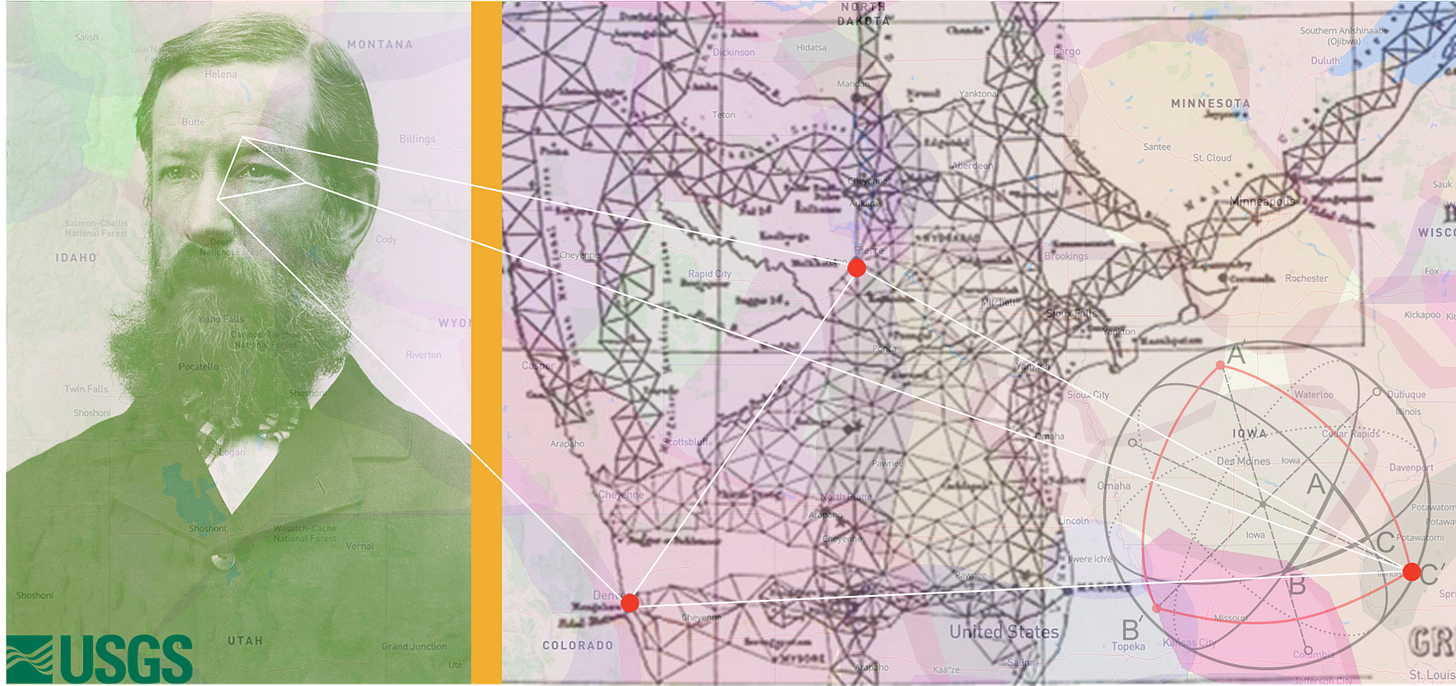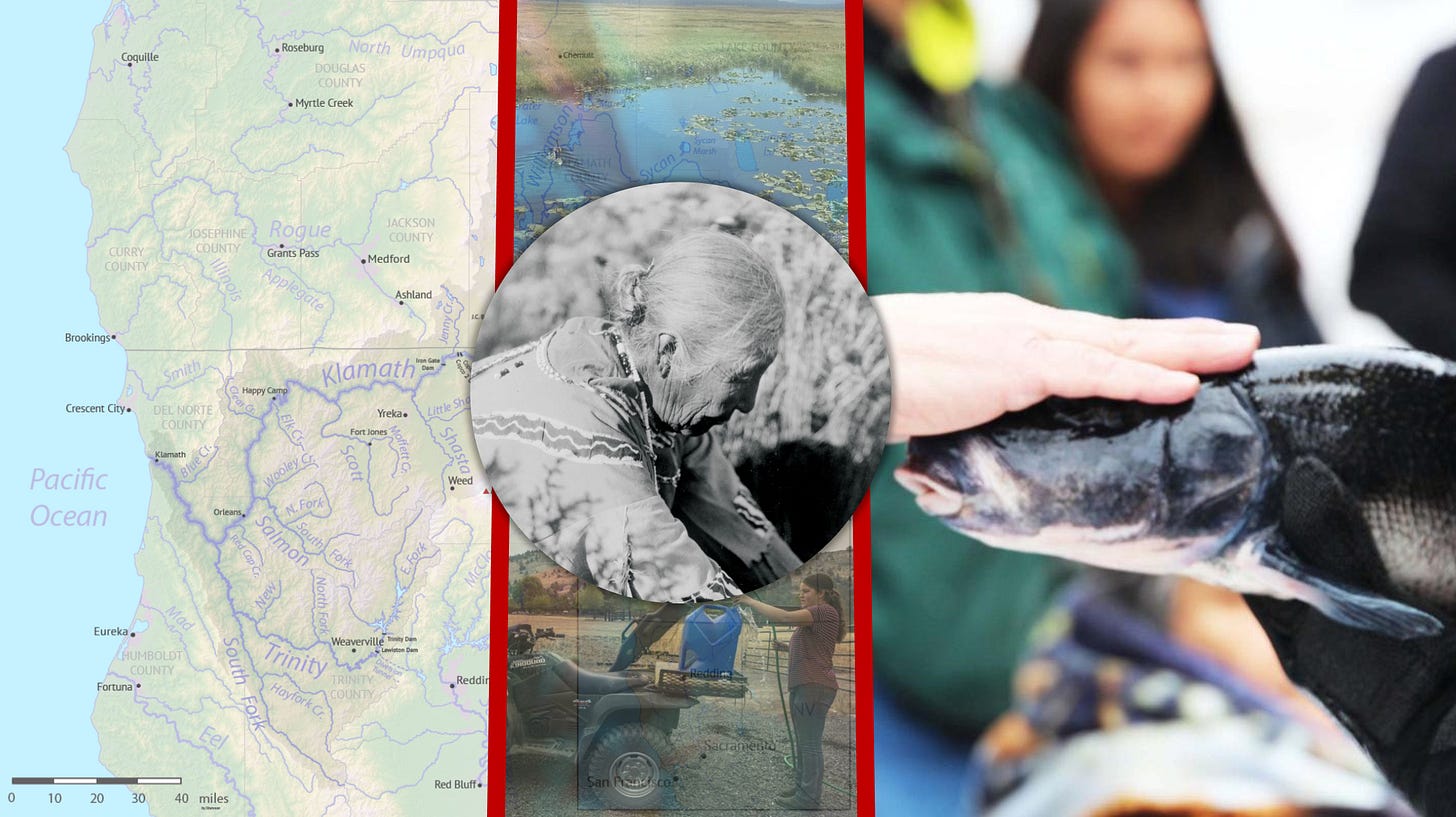Hello Interactors,
The first year of Interplace is nearly complete. I want to thank everyone who supported me through 2021 by subscribing, reading, listening, commenting, and sharing. I also want to thank the London Writers’ Salon and all faithful writers who showed up on Zoom with me every morning at 8:00 Pacific time. It brought companionship, accountability, and miles of smiles.
Evolutionary biologists call interactors the individual traits that are so uniquely beneficial that they lead to natural selection. You are my interactors – special individuals self-selected to be a part of an evolutionary journey. Thanks to you, that journey will continue through 2022. I’m keeping to the same structure, but may summon the courage to do occasional interviews as well.
A year ago I kicked off Interplace. In the winter I wrote about human behavior, then moved to cartography in the spring, physical geography and the environment in the summer, and economic geography this fall. This is post number 50 and the last of 2021. Should Interplace 2021 be a book, it would be comprised of four sections, 50 chapters, nearly 740 pages, and over 130,000 words.
To celebrate, I thought I’d share excepts from the most read posts from each of the four seasons. I also included titles and links to all 50 pieces at the end.
But before I start, I thought I’d share a quote from the legendary leader the city of Seattle was named after, Chief Si'ahl (siʔaɫ). These words appeared in my first newsletter and continue to serve as an inspiration for Interplace today. They’re worth sharing again as we reflect and contemplate the constellation of interactions with people and place we all had throughout 2021 and imagine what’s ahead in 2022.
“Humankind has not woven the web of life.
We are but one thread within it.
Whatever we do to the web, we do to ourselves.
All things are bound together.
All things connect.”
And now, excerpts from the top four most read Interplace posts of 2021.
WINTER: BEHAVIOR
Take Your Head for a Walk
Your brain makes maps on your behalf. But if you want a good one, take a hike. Your brain will love you for it, and your future self will too.
It turns out walking and cognitive mapping are mutually dependent systems that are only optimized when done together. Driving or riding as a passenger are poor substitutes for enhancing our interactions with place. In the words of neuroscientist, Shane O’Mara,
“The brain’s navigational and mapping and memory systems are so intertwined as to be almost one and the same. Walking to somewhere depends on the brain’s navigational system, and in turn walking provides a vast amount of ongoing information to the brain’s mapping and navigation systems. These are mutually enriching and reinforcing systems.”
Our cities don’t make it easy to walk. A century of car culture has kept people from interacting with place. We can deduce from the research I’ve cited, that this is a bad thing. Not only do we have a biased and hazy image built in our minds of the environment in which we live, sitting in a car or a chair does not facilitate happy thoughts.
We all succumb to what these two Iowa State researchers referred to as the ‘dread effect’. The thought of expending more energy than necessary can make one dread walking. It’s all too easy to tap a destination on Google maps, hit the ‘walking distance’ tab, shutter at the time and effort it would take to walk, and then grab the keys and drive there. But since Covid hit, I instead grab my headphones, take a step, and feel the cells in my brain come alive. I am interacting with place, with a smile on my face, as a cranial cellular symphony traces a map of the space.
SPRING: CARTOGRAPHY
You Are What You Map
How triangles, topology, quadrangles, and cartography yield maps that can skew both messages and time
The Renaissance accelerated the field of cartography. This was an era of discovering new knowledge, instrumentation, and the measuring and quantification of the natural world. Mercator’s projection stemmed from the invention of perspective; a word derived from the Latin word perspicere – “to see through.” European colonial maps were drawn mostly to navigate, control, and dominate land – and its human occupants. We have all been controlled by these maps in one way or other and we still are. Our knowledge of the world largely stems from the same perspective Mercator was offering up centuries ago. The entire world sees the world through the eyes of Western explorers, conquerors, and cartographers. That includes elements of maps as simple as place names.
Take place names in Africa, as an example. The country occupied by France until 1960, Niger, comes from the Latin word for “shining black”. Its derogatory adaptation by the British added another ‘g’ making a word we now call the n-word. But niger was not the most popular Latin word used to describe people of Africa, it was an ancient Greek derivative; Aethiops – which means “burn face”. If you replace the ‘s’ at the end with the ‘a’ from the beginning, you see where the name Ethiopia comes from.
There’s another Westernized place name just west of where the Dakota and Lakota people thrived called Gannett Peak. It’s the tallest mountain in the state of Wyoming and is part of the Bridger-Teton range. I’m sure you’ve heard of the more popular neighboring range, the Grand Teton’s; another notable (and sexist) French place name which means – ‘Big Boobs’. Gannett Peak is named after Henry Gannett – the father of American mapmaking.
He was one of many geographers throughout the history of western colonization. Sure he was more influential than most, but they were all tasked with the same thing. Whether it was triangulating British territories in India, finessing French regions in Africa, or delineating Dutch districts in Brazil they were all measuring, mapping, and manipulating how others should see the world. It’s the paradox of mapmaking. No matter your intent, whatever line you draw will reflect the bias you bring.
Mercator was biased by perspective because that’s what the culture of his time led him to do. Gannett mapped natural occurring features of the land because the mapping of minerals and other natural resources was in high demand. Iowa was named Iowa because that’s the word they knew. Even attempts to counter-map the dominance of cartesian colonial cartography can’t escape its own bias. Nobody can. But we live on a melting planet, so our days remain a few. If we’re going to survive this calamity, we must see that our thoughts are skewed. So the next you look at a map, consider its point of view. If we all do this together, we can invent a world anew.
SUMMER: ENVIRONMENT
Calamity in Klamath
Mukluks suffer over water for suckers
California’s fires have claimed two million acres. Ten percent of the sequoia population was taken by a single fire; trees that have been on this planet for thousands of years – gone. It’s so dry in southern Oregon’s Klamath valley that wells are drying up. Homeowners are having to drive for their water. The county has ordered cisterns from as far away as Oklahoma, but are running up against shortages of rain barrels due to choked supply chains and increased demand.
The Klamath valley has seen its fair share of emergencies, but every generation seems surprised. And sometimes apathetic. The first occupants of this area were the Klamath Tribes: the Klamath, the Modoc and the Yahooskin-Paiute people. They were sometimes referred to as mukluks or numu – the people. People, while differentiated by name, are still animals. And like our multi-legged, finned, scaled, and winged companions, we are an integral part of the environment. This was, and remains, a pan-Indigenous concept that deserves reminding. The Klamath Tribes embraced this belief in a shared communal slogan, “naanok ?ans naat sat’waYa naat ciiwapk diceew’a “We help each other; We will live good”
By the 1950s the Klamath Tribes became one of the most prosperous tribes in America. In keeping with their traditional ways, they owned, managed, and sustained the largest stand of Ponderosa Pine in the West. Driven by a self-sufficient determinism millennia old, they were the only tribe to make enough money to pay the United States Government for the services their people utilized.
But their success made them a target. The Klamath Tribes stood out. Having demonstrated just how profitable their land could be, it was time the United States took even more than they had a century prior.
On August 1, 1953, House Concurrent Resolution 108 was issued by the United States Congress announcing the official federal policy of termination. The resolution called for the immediate termination of the Klamath Tribes. Included were the Flathead, Menominee, Potawatomi, and Turtle Mountain Chippewa, along with all tribes in the states of California, New York, Florida, and Texas.
Between 1945 and 1960 Congress terminated more than one hundred tribes and small bands, 11,500 Indigenous people lost their native legal status, and over one million acres of land lost its trust status. Not a single tribe has improved economically since, while corporations have profited handsomely.
I’m convinced that a combination of traditional knowledge and new science, technology, and invention will yield the best path forward for managing our global climatic conundrums. But we can’t just tech our way out of this. We’re going to have to change our food habits, reduce extractions, eliminate commercial and consumer waste, and overhaul the global food system.
The dam has been cracked, but it needs to be broken wide open. All living organisms depend on water. They depend on us. Let’s listen to the ancient words of the Klamath people: When we help each other, we will all live well.
FALL: ECONOMICS
Cryptocurrency, Euro-insurgency, and Economic Urgency
Untangling economic supremacy through heresy while offering an alternative destiny
Cryptocurrency was invented to circumvent the juggernaut that banks, governments, and credit card companies hold on the currency market. But the more it gets legitimized as an alternative currency, the more interested these traditional institutions become. For example, one form of cryptocurrency rising in popularity are stablecoins. It’s a digital currency that can be converted into ‘real’ money and is issued by the very institutions the inventors were hoping to circumvent. It seems there is no escaping Western economic dominance.
The truth is, alternative currencies and economies exist all around us and have for centuries. For example, in a district of central London call Brixton, where David Bowie once lived, shops no longer accept the British Pound. Instead they take an alternative currency called the Brixton Pound that features a picture of Bowie on a paper bill that is as nicely designed and proportioned as Bowie himself.
Many schemes like this exist outside of the Western world too – and they’re often not tied to the dominant currency system. For example, there’s a settlement on the outskirts of Nairobi, Kenya called Bangladesh. Not to be confused with the country of Bangladesh. It was named after an early settler who unexpectedly packed up and moved to Bangladesh never to return. The area was hence called Bangladesh. It’s a poor informal settlement made of self-made homes and little to no infrastructure, yet is home to over 20,000 people. They work at nearby industries at the fringe of Nairobi doing odd jobs regularly paid workers refuse to do.
Many are well educated, but work is intermittent and there are more qualified workers than there are jobs. It leads to extreme poverty, apathy, and strife. One local teacher in the Peace Corps, Will Ruddick, became frustrated that he was graduating kids with no where to go. He said many of whom were more skilled academically than many he’d witnessed at Stanford. Ruddick happens to also have a PhD in econophysics – a branch of economics that draws inspiration from the field of physics. He began wondering how he could devise a way for residents in areas like Bangladesh to earn consistent wages doing meaningful work in their community. He wanted ways for them to create and share in their abundance, take charge of their own livelihoods, and build a self-sustaining economic future.
American economic geography professor, Eric Sheppard, from UCLA offers that because Western style capitalism relies on “uneven and asymmetric connectivities” that end up “driving uneven geographical development”, we’ve arrived at a place where the dominant global economic scheme of globalization has failed “at scales ranging from the globe to the neighbourhood.”
Instead of propagating or placating a dominant global economy, what if we acknowledge, embrace, fertilize, understand, celebrate, and experience alternative economies embedded within or on the fringe of the establishment, like those Ruddick has pioneered. After all, these are economies that have been forged through the interaction of people and place whose shared histories have, as Sheppard says, “found them encountering, rather than propagating, Capitalist economic development.”
Following is an index of all the pieces I’ve written over the last year. Thanks, again, for the support. I’ll see you all next week and next year.
FULL LIST OF INTERPLACE 2021
WINTER: BEHAVIOR
THE INTERACTION OF PEOPLE AND PLACE
What the World Needs Now is Love
The Lone Star Is in a Frozen State
A Computer on Every Desk and a Car in Every Garage
Bill and Brad's Excellent Adventure
SPRING: CARTOGRAPHY
A Groma from Rome Finds a New Home
Make Your Own Survey in Under a Day
The U.S. Census: Mapping a Sense of Us
Winning Over the Windy City with Watercolors
Maps as Logos; Atlases that Impose
Spring 2021 Cartography Review
Cul-de-sacs, Caucasians, and the Kansas Garden City
SUMMER: ENVIRONMENT
A New Chapter to Behold as the Network of Life Unfolds
Ruckelshaus and Hickel Get us Out of a Pickle
Big Science Meets Big Ecology under the Big Sky
Muggy Conditions, Buggy Coalitions, and Collegiate Ambitions
Nature, Nurture, Math, Art and Virtue
Solar Powered Imperialist Addictions
Charlie Watts and the Strange Attractor
Ditches, Wells, and Dams. Riches, Cartels, and Scams.
FALL: ECONOMICS
Space Cadets and the Earthy Crunchies
From a Shoe Lust Hit, to 'Just Do It'.
Harder, Better, Faster, Stronger
Hitler and the Capitalist's Fix
Supply Chain Pains as China Gains
Black Friday and the Christmas Creep: Part 1
Black Friday and the Christmas Creep: Part 2
The ‘One Click Buy’ Empire Needs an Umpire
Hoops, Groups, and Feedback Loops
Cryptocurrency, Euro-insurgency, and Economic Urgency
WINTER: BEHAVIOR
Oh Christmas Tree, Oh Christmas Tree, Your Story Has Many Branches
















